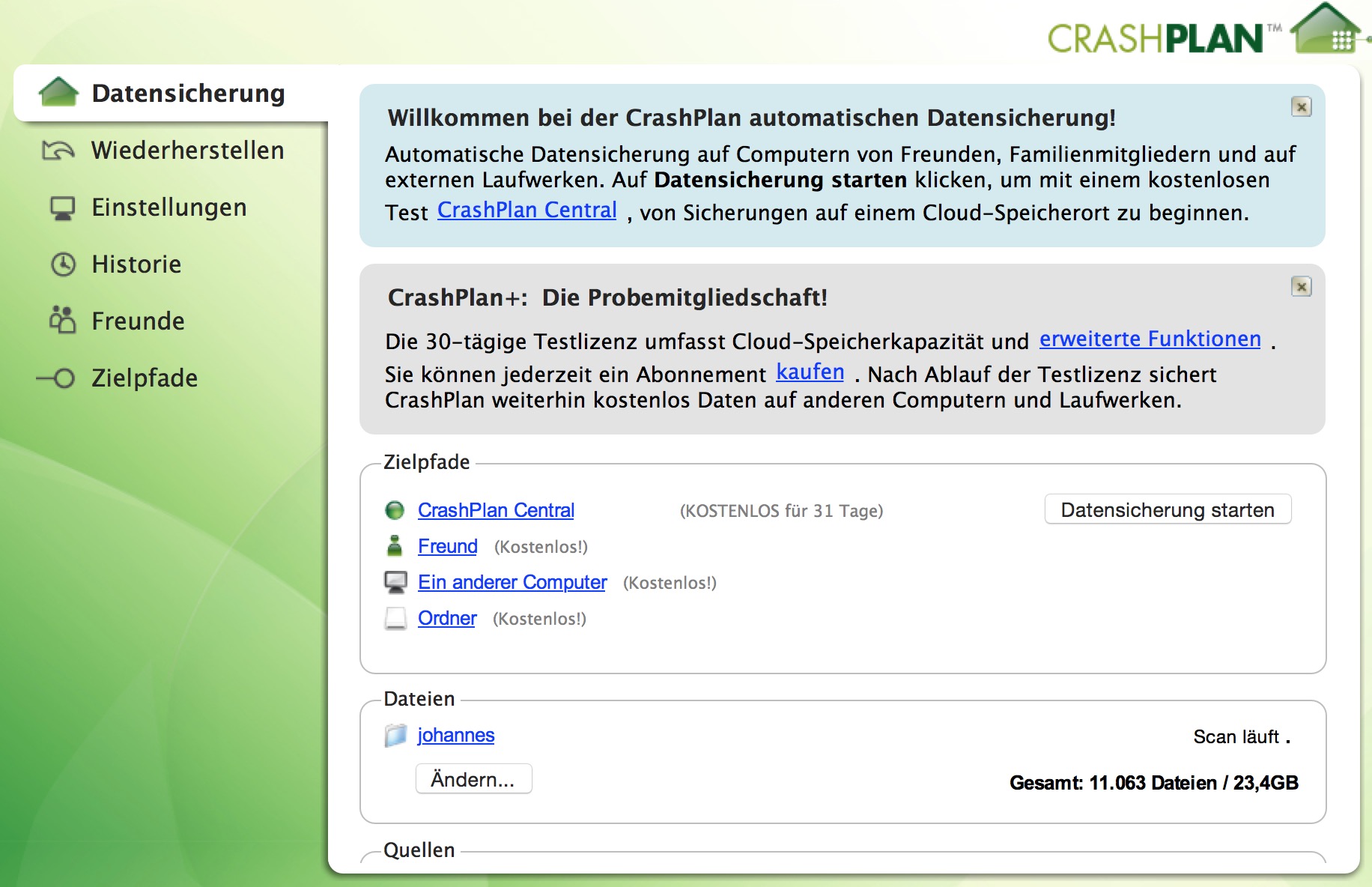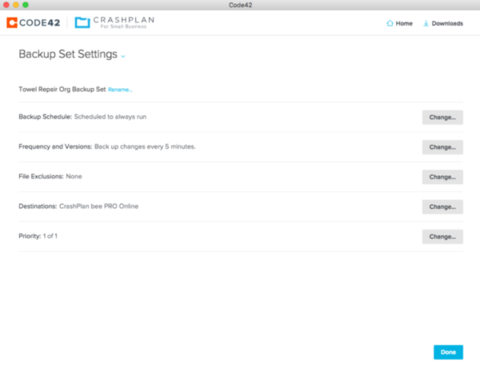

- #Crashplan personal how to#
- #Crashplan personal install#
- #Crashplan personal download#
- #Crashplan personal windows#
This can be caused by the sysctl variable fs.protected_fifos restricting the engine (running as root) from connecting to a named pipe owned by the desktop user contained in /tmp (similar to tmpfs#Opening symlinks in tmpfs as root fails). If a restore gets stuck at «Preparing», it may be due to a permission restriction on /tmp that causes communication between the restore tool and backup engine to fail. Make sure to create the new tmpdir and verify CrashPlan's user has access to it. SRV_JAVA_OPTS="-Djava.io.tmpdir=/var/tmp/crashplan -Dfile.encoding=UTF-8 … To change the tmpdir CrashPlan uses, open /opt/crashplan/bin/run.conf and insert -Djava.io.tmpdir=/new-tempdir to SRV_JAVA_OPTS, for example: You can either remove the noexec mount option (not recommended) or change the tmpdir CrashPlan is using. It uses the default Java tmp dir which is normally /tmp. If the backup is stuck on «Waiting for Backup» even after you engage it manually, it might be that CrashPlan cannot access the tempdir or it is mounted as noexec. Note that this method can be less secure than tunneling traffic through an SSH tunnel.
#Crashplan personal how to#
#Crashplan personal windows#
The headless machine's windows will appear on the local X11 server. The CrashPlan daemon's configuration files (in /opt/crashplan/conf) are in an obscure XML format, and they are meant to be edited programmatically by the CrashPlan client.ĬrashPlan 5 introduced a new client which unfortunately dropped support for configuring a remote server with a local client, so you will need to use X11 forwarding.Įnsure that X11Forwarding is set to yes in the headless server's /etc/ssh/sshd_config and from another machine running X11, SSH to the headless machine with -Y, and from the remote shell run CrashPlanDesktop.

Running CrashPlan on a headless server is not officially supported. To make CrashPlan automatically start upon system startup, enable the systemd unit. Backing up to the cloud servers requires a monthly subscription.īefore accessing CrashPlan's graphical user interface, you should start the rvice unit.ĬrashPlan can be configured entirely through its graphical user interface.
#Crashplan personal download#
#Crashplan personal install#
Most CrashPlan for Small Business administrators prepare to install the CrashPlan app using one of these methods:.With CrashPlan for Small Business, you are billed each month for the number of active devices in your organization, regardless of the number of users you have.In some situations, you may prefer to install the CrashPlan app for multiple users on the same computer, instead of following the installation instructions below.Ensure each person can download only their own backed-up files instead of having access to the files of other people in your small business.Create a separate account for each user before installing the CrashPlan app on those users' devices.Ensure that two-factor authentication is set up on your CrashPlan for Small Business account.


 0 kommentar(er)
0 kommentar(er)
